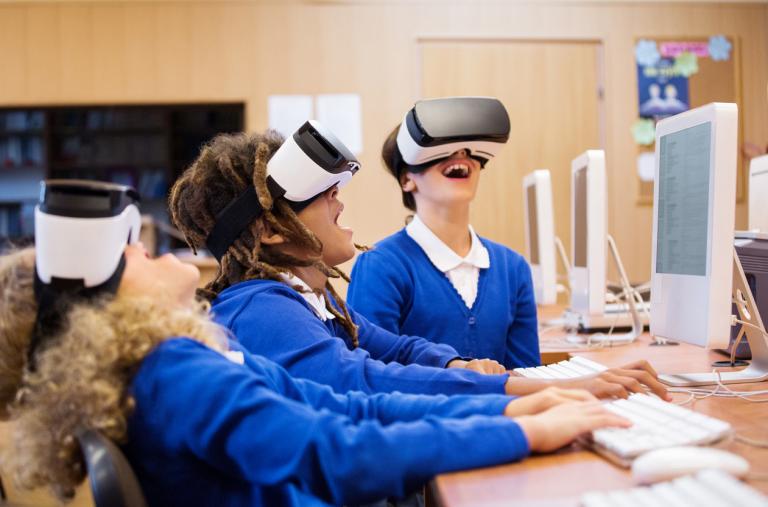2020 was a tough year for everyone. Both businesses and schools were affected. The COVID-19 pandemic led to changes in how businesses and educational institutions operate. The COVID-19 pandemic indeed led to innovations and technologies in the education sector. Here are some of the emerging technologies in education after the COVID-19 pandemic.
1. Virtual Reality (VR)
Virtual reality is used to enhance engagement and student learning. VR education is indeed transforming the way content is delivered. VR technology creates a virtual world that allows students to interact with it. Thus, students get more immersed in what they learn. Virtual reality in education helps students with:
- Scaling the learning experience: students can understand how things work based on practical experience.
- Learn by doing: With VR education, students get an anchor to the instructions. VR inspires students to discover things for themselves. Students not only learn passively but by doing.
- Emotional reaction: Visceral reactions are fundamental in forming memories. Using VR in education, allows students to engage and make the experience memorable.
- Developing creativity: virtual reality is useful for content creation. It then gives students powerful tools to boost creativity.
2. Artificial Intelligence (AI)
Artificial intelligence (AI) is another emerging technology in education. Statistics show that artificial intelligence education will grow by 45% by 2025. However, AI will not replace the role of teachers in schools. Artificial intelligence will fill in the gaps in learning and enable teachers to do more. Here are ways AI will revolutionize education:
Task Automation
AI will automate administrative work and make the tasks of teachers easier. Therefore, it will take a huge load off teachers’ shoulders. The result is productive teachers who will have time for one-on-one sessions with students.
Smart Content
AI will also add new methods to help students achieve success. Smart content refers to virtual content that includes video conferencing, textbooks, and video lectures. Robots can improve learning by creating digital content that can be used by students of different grades. They can make digestible content and highlight important lesson stuff as well as summarize key points.
Personalized Learning
Customized learning improves student achievement no matter the starting level. Since teachers are unable to give one-on-one sessions for every student, AI will come in handy.
3. Gamification
Games are no longer used for recreation only, but in education as well. It has become a useful tool in training and motivation. The field of practice has gone beyond integrating online games into the curriculum.
Gamification makes it easy for students to understand the hard stuff and makes them more engaged. Gamification involves game-based elements such as teamwork, peer competition, point-scoring, and score tables to help students get new information. Further, gamification is an effective technology in education since it triggers human emotions such as accomplishment, happiness, and intrigue. Here are some benefits of gamification:
- Students have fun while learning
- Gives students a relaxed atmosphere
- Higher concentration and engagement in students
- Students can think outside the box.
- Lastly, students develop intrinsic motivation for learning
4. Augmented Reality (AR)
Augmented reality is yet another technology gaining popularity in schools. Teachers can use augmented reality to improve learning outcomes through interactivity and engagement. By 2023, there will indeed be 2.4 billion Augmented reality mobile users in the world.
AR increases the ability of students to spend more time learning curricula and reduces the time spent on learning how to use new technology. Through interactivity and engagement, students can remember what they have learned. With augmented reality, students can deepen their knowledge in the following areas:
- Working with numbers
- Reading
- Content creation
- Spatial concepts
- Real-life scenarios
- Lastly, playing
Learn More About Emerging Technologies in Education
At Tenney School, we know the importance of using digital learning tools in classrooms to help with student engagement. If you would like to know how we will help your child become successful in their education, feel free to contact us.


